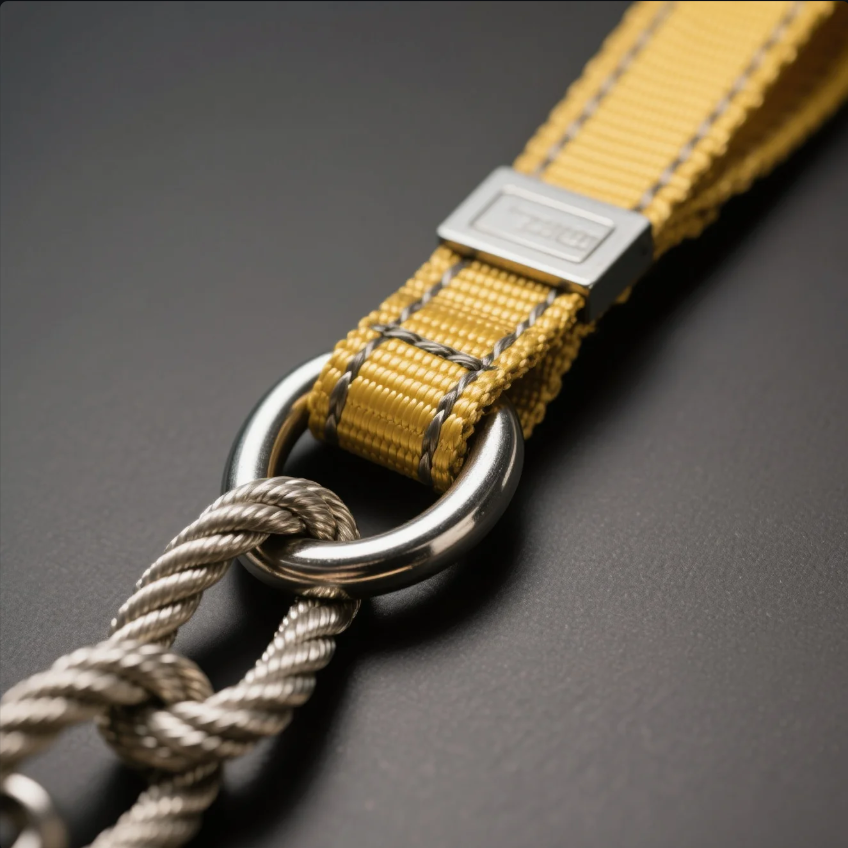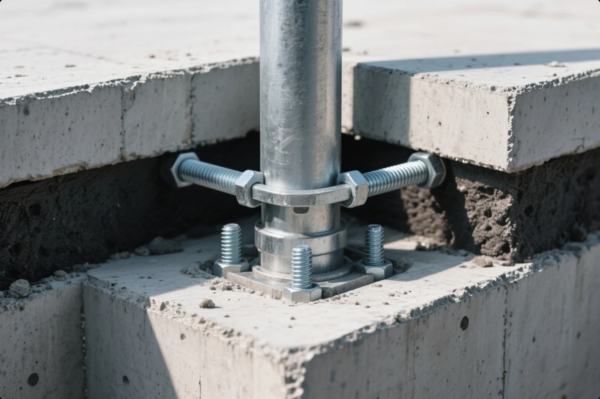What is a rope sling?

A rope sling is a versatile tool used in various industries for lifting, securing, and hoisting loads. It is a loop of rope or wire that provides a secure and stable way to handle heavy materials.
Rope slings are critical for ensuring safety and stability during lifting operations. This article will explore the uses of rope slings, the different types, and their applications in various industries.
Keep reading to understand how rope slings work, their types, and how they are applied in lifting and rigging tasks.
What is a rope sling used for?
A rope sling is primarily used for lifting and hoisting heavy loads. It provides a secure and stable connection between the load and the lifting equipment, such as cranes, hoists, or pulleys. Rope slings are often used in construction, rigging, and material handling tasks.
Snippet paragraph: Rope slings are used for lifting and hoisting heavy loads in construction, rigging, and material handling applications, ensuring a secure connection between the load and the lifting equipment.

Dive-Deeper on Rope Sling Uses
Rope slings are incredibly versatile and are used in various applications where other lifting methods may not be practical. Here are some key uses:
-
Construction: Rope slings are used to lift heavy materials, such as steel beams, concrete panels, or machinery, on construction sites. They ensure that materials are securely lifted and moved into position.
-
Rigging: In rigging operations, rope slings are used to hoist loads onto ships, cranes, or trucks. They provide a flexible and adjustable way to lift large, bulky items.
-
Material Handling: Rope slings are used in warehouses and factories to move materials from one place to another, especially in tight spaces or where standard lifting equipment cannot reach.
-
Aviation and Marine: In aviation and marine industries, rope slings are often used for hoisting and securing aircraft and cargo. They are particularly useful for securing items in transit or during maintenance procedures.
Rope slings are essential in lifting operations where safety and reliability are paramount.
What are the three types of slings?
The three primary types of slings used in lifting and rigging operations are rope slings, chain slings, and wire rope slings. Each type has its unique features, applications, and strengths.
Snippet paragraph: The three main types of slings are rope slings, chain slings, and wire rope slings. Each offers different benefits and is suited for specific lifting tasks.

Dive-Deeper on Sling Types
-
Rope Slings: Made from natural or synthetic fibers, rope slings are flexible, lightweight, and easy to handle. They are often used for lifting delicate or irregularly shaped loads. However, they are not as strong as chain or wire rope slings and may degrade over time, especially when exposed to harsh conditions.
-
Chain Slings: Chain slings are made from durable steel links and are designed to lift heavy loads in rough environments. They provide excellent strength and durability but are less flexible than rope slings. Chain slings are commonly used for lifting heavy machinery or items with sharp edges.
-
Wire Rope Slings: Made from wire ropes, these slings combine flexibility with high strength, making them suitable for a wide range of lifting tasks. Wire rope slings are used in heavy-duty applications and are known for their durability and resistance to wear. They are often used in construction, industrial, and mining applications.
Each type of sling is designed to suit different lifting requirements, with rope slings being ideal for light-duty and delicate lifting, chain slings for heavy-duty and harsh conditions, and wire rope slings for general-purpose heavy lifting.
What type of eye is a wire rope sling?
A wire rope sling typically features one of several types of eyes at the ends, such as single-leg eyes, double-leg eyes, or folded eyes. The type of eye used depends on the lifting requirements and the nature of the load being handled.
Snippet paragraph: Wire rope slings commonly use single-leg, double-leg, or folded eyes, depending on the specific lifting needs and the configuration of the lifting equipment.

Dive-Deeper on Wire Rope Sling Eyes
-
Single-Leg Eye: This is a single loop at the end of the wire rope. It is commonly used in lifting applications where only one point of attachment is needed. It is ideal for vertical lifting where the load is lifted from one point.
-
Double-Leg Eye: The double-leg eye consists of two loops at the ends of the wire rope, which allows for the sling to be attached at two points. This provides more stability and balance when lifting larger or heavier loads.
-
Folded Eye: The folded eye is a type of loop where the wire rope is bent over itself and secured with a clamp or splice. Folded eyes are typically used for larger slings and provide a more secure connection, reducing the risk of wear and tear on the rope.
The choice of eye depends on the weight and shape of the load, the lifting equipment used, and the required lifting configuration. Each eye type provides a secure attachment point for lifting tasks.
What does slinging rope mean?
Slinging rope refers to the practice of using rope slings to lift, secure, or move objects. It involves placing a rope sling around an object, attaching the sling to a lifting device, and hoisting the object to its desired position.
Snippet paragraph: Slinging rope involves using rope slings to lift, secure, or move objects. It is commonly used in construction, rigging, and material handling.

Dive-Deeper on Slinging Rope
Slinging rope is an essential technique in various industries where lifting heavy objects is required. Here’s how the process typically works:
-
Preparation: First, a rope sling is selected based on the size, weight, and shape of the object being lifted. The sling is then positioned around the object, ensuring that it is securely placed.
-
Attachment: The ends of the rope sling are attached to the lifting equipment, such as a crane, hoist, or pulley system. The attachment is carefully checked to ensure that it is secure and will not slip during the lifting process.
-
Lifting: The lifting device is activated, and the load is carefully lifted. Throughout the process, the load should remain balanced and stable to prevent any accidents or damage to the object.
Slinging rope is an important skill for workers in construction, logistics, and various other fields, as it ensures safe and efficient handling of materials.
Conclusion
Rope slings are essential tools for lifting and hoisting loads in various industries. Whether you're using rope slings, wire rope slings, or chain slings, understanding their types, uses, and applications will help ensure safety and efficiency in lifting operations.
TEMPLATE_END







